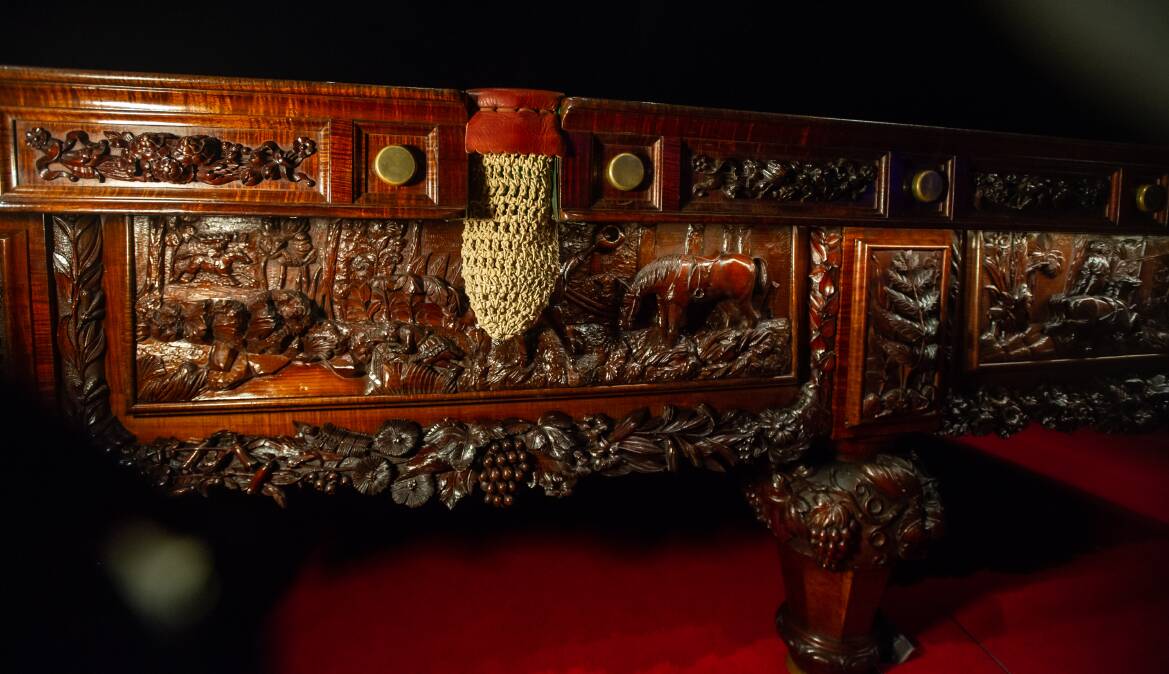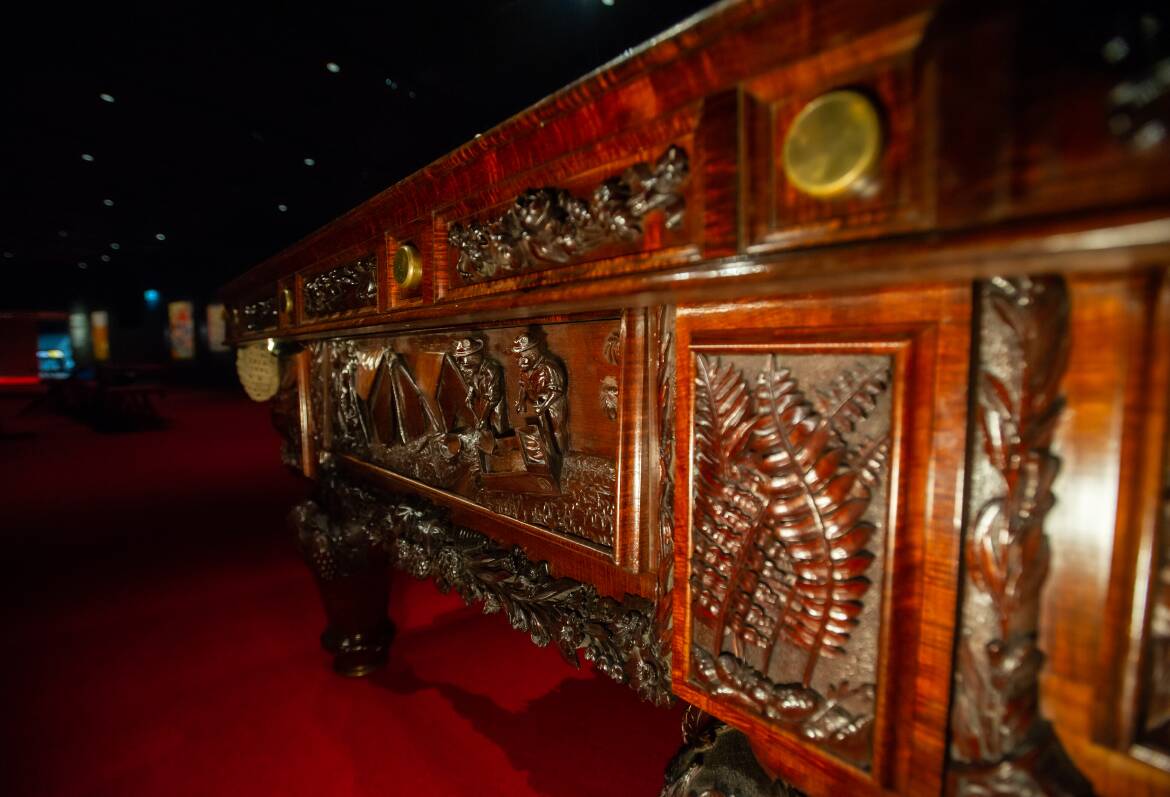
If you need a cue to head to the National Museum of Australia, this is it.
The national institution's newly acquired Australian colonial billiard table is now on display as part of its National Historical Collection.
Built in 1885, the one-of-a-kind billiard table features intricate carvings of Australia's early history including colonial life, the gold rush and representation of the conflict between settlers and First Nations people.
The table was reportedly displayed at Buckingham Palace, where it is suggested that it was admired by Queen Victoria and played upon by billiards enthusiast Prince Albert and the Prince of Wales, who was later crowned King Edward VII.

"The really interesting thing about the table, and its decoration ... has some representation of the violence of the frontier, that by the early 20th century disappeared, and then is just absent," National Museum of Australia head of collection Ian Coates said.
"But here, the Royals are seeing evidence of the violence. They are depictions from a colonial point of view, but they're still there."
The billiard table was built by Sydney-based billiard table manufacturer Ben Hulbert and with the carvings done by skilled cabinet maker George Billyeald.










It was created to be displayed at the 1886 Colonial and Indian Exhibition in London, before it travelled to Adelaide's Jubilee Exhibition in 1887 and Melbourne's Centennial Exhibition in 1888. It then spent some time at a pub in Milton, New South Wales - which Hulbert owned at the time - before heading to New Zealand where it had various owners. It was then sold at a London auction to an American private collection.
Most recently the table, and its matching scoreboard, were in a private collection in New Orleans, where they were acquired by the National Museum of Australia for $1.1 million, with the support of the Australian Government's National Cultural Heritage Account, which contributed $550,000.

The table itself weighs between 1500 to 2000 kilograms. There are 50 key components - including four slate slabs, weighing 250kg each. With all of the accompanying items, such as bolts and screws, senior large technology conservator Nathan Pharaoh estimated there were several hundred parts, all of which had to be assembled at the museum when it arrived.
"I have to say this is my first billiard table that I've worked on," he said.
"That in itself brings some challenges in trying to research how it's assembled and some of the terminology that's used around tables. And often our job as a conservator is ... to do the research, and if we don't know, find the people that do know. So we've had some consultants that have helped us do the assembly."
We've made it a whole lot easier for you to have your say. Our new comment platform requires only one log-in to access articles and to join the discussion on The Canberra Times website. Find out how to register so you can enjoy civil, friendly and engaging discussions. See our moderation policy here.







